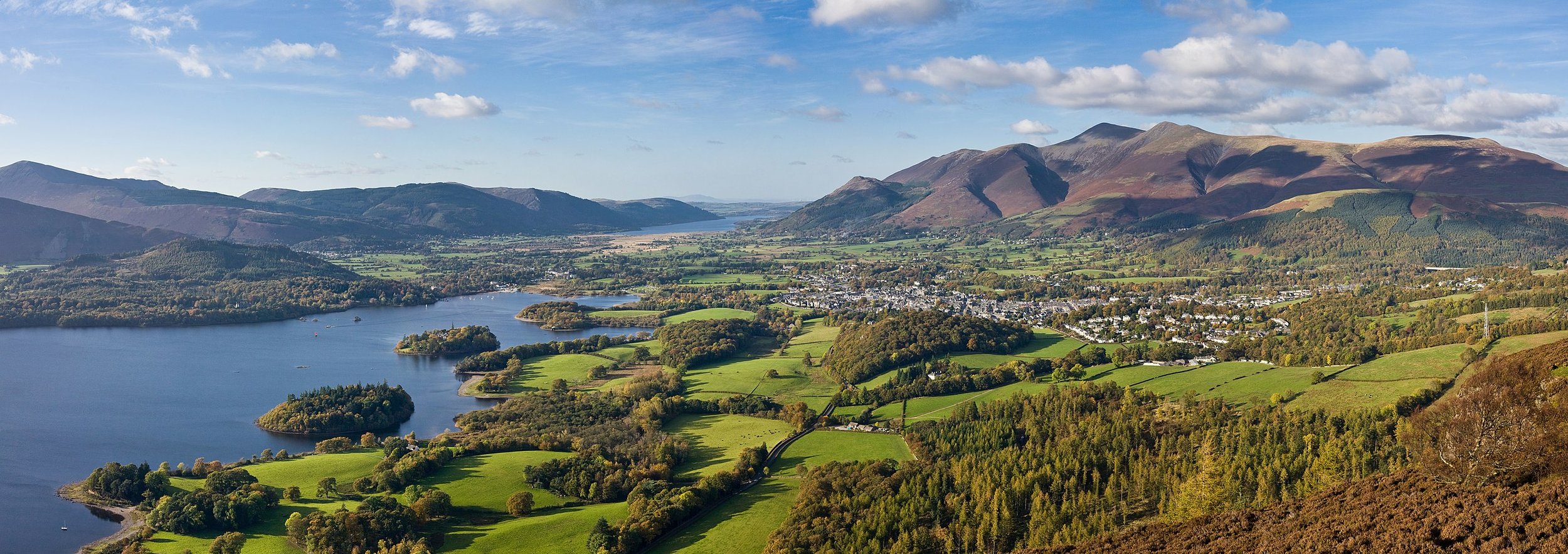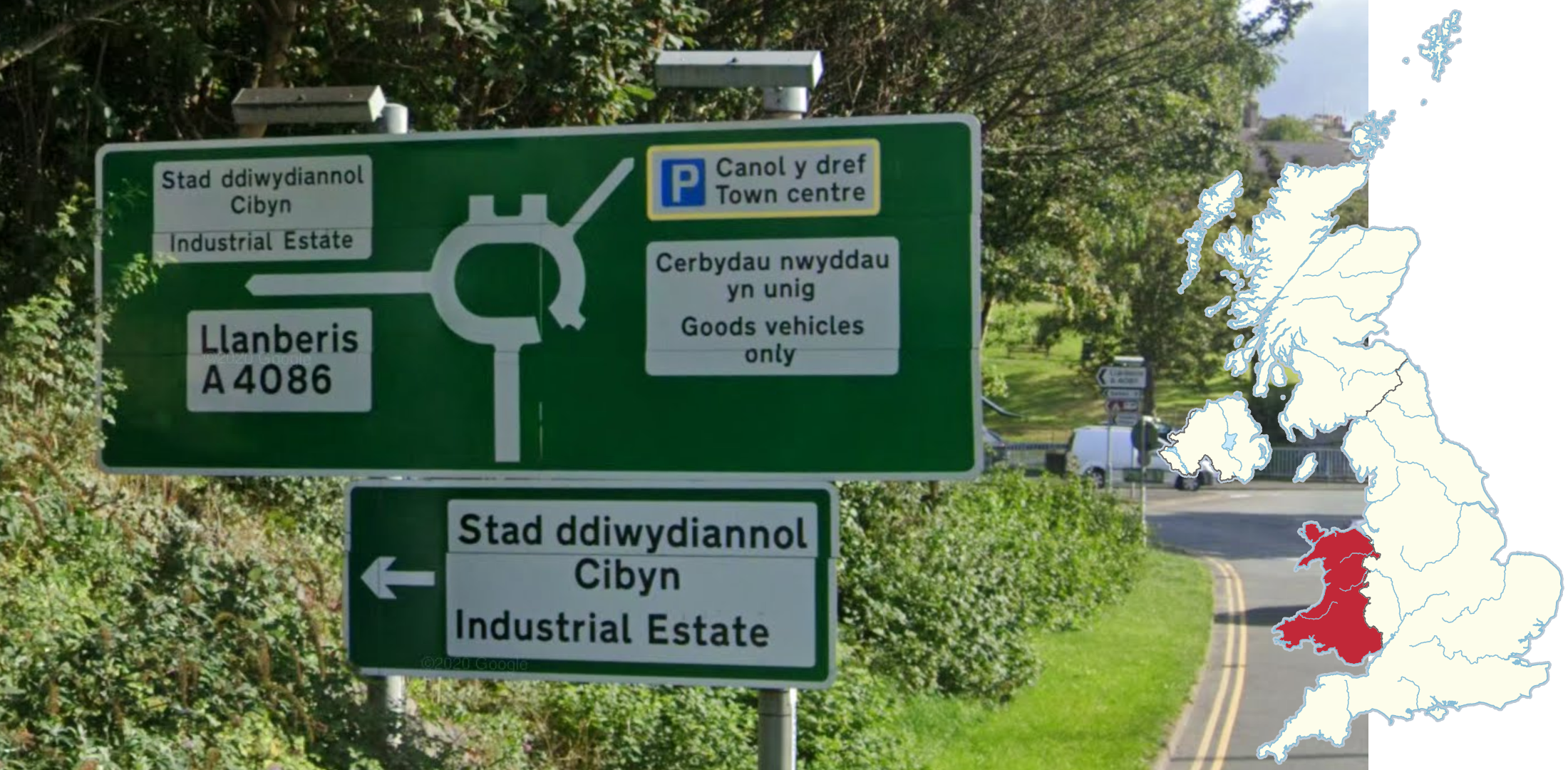
United Kingdom
UK front plates are white, while back plates are yellow. Some plates have a blue strip on the left, but most do not.
Additionally, you might see a plate with a green ‘Zero Emissions’ strip.
NOTE: Ireland uses white front and back plates, always with a blue strip on the left.
The UK commonly uses these white street signs with black text, that are positioned low to the ground. They are usually supported by two small posts. Many street signs in suburban areas will have a small cul-de-sac icon.
They can sometimes have different colours or feature small designs, like coats of arms.
UK yield signs feature the phrase “GIVE WAY”.
NOTE: Irish yields signs just have the word “YIELD”.
The yellow warning stickers on utility poles can be a good way to distinguish between the UK and Ireland.
The most important difference is that UK stickers feature a guy getting zapped by a lightning bolt.
The Irish stickers usually have a lightning bolt, but lack the guy getting zapped. They also often have an extra second rectangular sticker with a black outline, below the lightning bolt.
Rural metal gates with square corners are very common in the UK.
NOTE: This is mainly useful to distinguish it from Ireland, where similar gates typically have rounded corners. Gates in Northern Ireland also typically have rounded corners.
Terraced houses (row houses) are very common in the UK. This housing type shares walls on both sides with neighbouring homes. You will also see a lot of semi-detached houses, which share just one side wall with another house.
NOTE: 61% of the population lives in terraced or semi-detached houses, significantly more than most other European countries. The only European countries where terraced houses are this common are Ireland and the Netherlands.
Suburbs in UK towns tend to have a recognizable look. They typically feature near-identical houses, often semi-detached, usually with well-manicured lawns. The road layout can be maze-like, with lots of cul-de-sacs and curvy roads.
Some buildings, both old and new, feature black-and-white timber framing.
NOTE: This is less common in Ireland.
Landline phone numbers in the UK always have nine or ten digits after the 0 trunk code. The first two to four digits after the 0 are the area code. Unfortunately for Geoguessr players, there is not much rhyme or reason to their geographic ordering.
However, the area codes of some large cities are still worth memorising. The most important ones are summarised in this infographic. Notably, all of Northern Ireland uses the phone code 028, and all of London uses 020.
A complete overview of all other area codes is available in this infographic.
The Scottish Highlands can be distinguished by the semi-barren, very mountainous landscape.
NOTE: A lot of Generation 4 coverage in the Highlands is from (early) spring, meaning that the vegetation often looks brown and yellow.
In addition, some of the most mountainous parts of Wales and Northern England can look similar.
In Scotland, you can often find these red and white bollards. They are round, bulky, and have a red-and-grey reflector that wraps all the way around.
They are sometimes found in other parts of the UK.
NOTE: The bollard looks similar to the French one. However, there are some small differences. For example, the Scottish bollard is round on the top, while the French one is more spiked.
Welsh is a Celtic language that is spoken throughout Wales. Road signs in Wales are usually bilingual English and Welsh. Towns often have Welsh names too.
Welsh uses the letters D, W, and Y much more commonly than English. The double LL is also very distinct.
NOTE: Scottish Gaelic and Irish are both also Celtic languages. They can look somewhat similar to Welsh.
In Wales, markings on the road are in both English and Welsh. One of the best examples of this is ‘Araf’, which means ‘Slow’. This marking is only found in Wales.
NOTE: Araf is not the only Welsh language marking you can find, it is just the most common. Whenever you see an obviously non-English marking next to an English one, consider guessing in Wales.
Scottish Gaelic is a Celtic language that is closely related to Irish. They have a very similar look and use accent marks commonly. Common and recognizable letter clusters include bh, dh, fh, mh, ai, ea, eo, and ui.
Scottish Gaelic on road signs is found most commonly in the Scottish Highlands, and is almost always found north of Glasgow.
NOTE: Scottish Gaelic on road signs will often be in green or yellow text. This will not happen with Welsh or Irish on road signs.
It is common to see houses made of large blocks of sandstone or granite in Scotland. Granite buildings are common in Aberdeen, red sandstone is common in Glasgow and Dumfries, and yellow sandstone is common in Edinburgh.
The Isle of Man is an island in the Irish Sea between the United Kingdom and Ireland. There is only Generation 2 coverage on the island. For country streak purposes, it is counted as part of the United Kingdom.
Plonk It has a more in-depth guide to the Isle of Man here.
Jersey is an island in the English Channel between France and England. There is only Generation 2 coverage on the island. For country streak purposes, it is counted as part of the United Kingdom.
Plonk It has a more in-depth guide to Jersey here.
Gibraltar is a British Overseas Territory located at the southern tip of the Iberian Peninsula, bordering Spain. For country streak purposes, the territory is counted as part of the United Kingdom.
Plonk It has a more in-depth guide to Gibraltar here.
Bermuda is a British Overseas Territory located in the North Atlantic Ocean.
Plonk It has a more in-depth guide to Bermuda here.
The Falkland Islands is a British Overseas Territory located in the South Atlantic Ocean.
Plonk It has a more in-depth guide to the Falkland Islands here.
South Georgia and the South Sandwich Islands is a British Overseas Territory located in the South Atlantic Ocean.
Plonk It has a more in-depth guide to the territory here.
The Pitcairn Islands is a British Overseas Territory located in the South Pacific Ocean.
Plonk It has a more in-depth guide to the Pitcairn Islands here.
The British Indian Ocean Territory is a British Overseas Territory, unsurprisingly located in the Indian Ocean.
Plonk It has a more in-depth guide to the British Indian Ocean Territory here.
In addition, here are some resources to help you practise the UK:
Plonk It United Kingdom (map link) - This map contains locations for practising each meta in the Plonk It United Kingdom guide from step 2 to 3.

















































